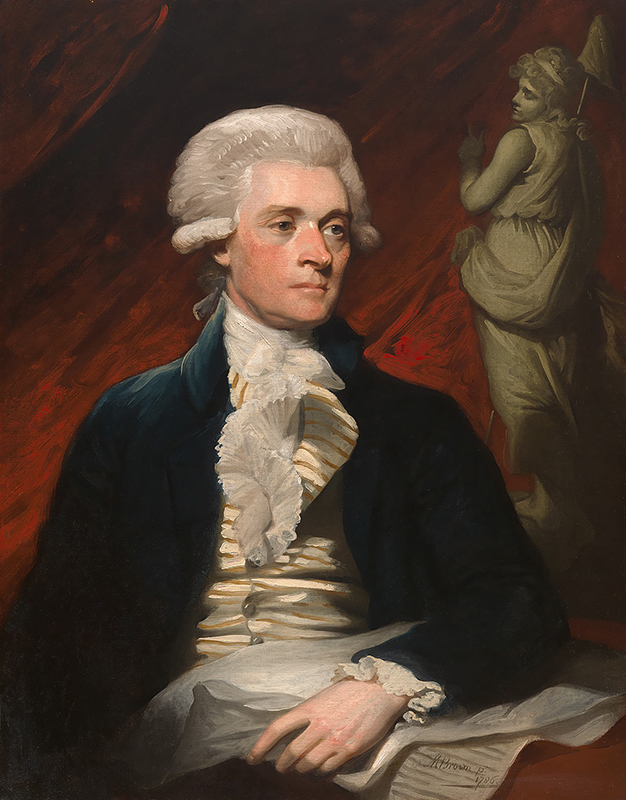Thomas Jefferson (1743–1826)

Thomas Jefferson 1743–1826 | Born Shadwell (now Albemarle County), Virginia | Mather Brown (1761–1831) | Oil on canvas, 1786 | Bequest of Charles Francis Adams | NPG.99.66
A scientist, an Enlightenment philosopher, and one of the most accomplished—and complicated— personalities in American history, Thomas Jefferson authored the Declaration of Independence and served his country as statesman, diplomat, and president. In 1803, during his first term as president, he orchestrated the Louisiana Purchase, which doubled the size of the United States and established the nation as a continental power. This expansion, more than any other, forced politicians to confront the U.S. economy’s dependence on slavery. Jefferson, who enslaved more than six hundred African Americans in his adult life, wrestled with the rift between his philosophical beliefs and his reliance on bondage.
In 1786, when Jefferson was serving as the United States minister to France, he paid a visit to see his friend John Adams, then the United States minister to Great Britain. Adams suggested that Jefferson pose for the Boston-born artist Mather Brown, who was living in London at the time. This is the earliest known likeness of Jefferson.
- Describe Jefferson’s hairstyle and his clothing. How might these elements help us determine the era and location in which the portrait was created?
- Describe the objects you see. Why are they here, and what do they tell us about Jefferson?
- What connections can be made between the figure of liberty in the background and Jefferson’s biography?
- Compare and contrast this portrait to Gilbert Stuart’s portrait of Jefferson. How did Jefferson’s likeness change? Why do you think so?